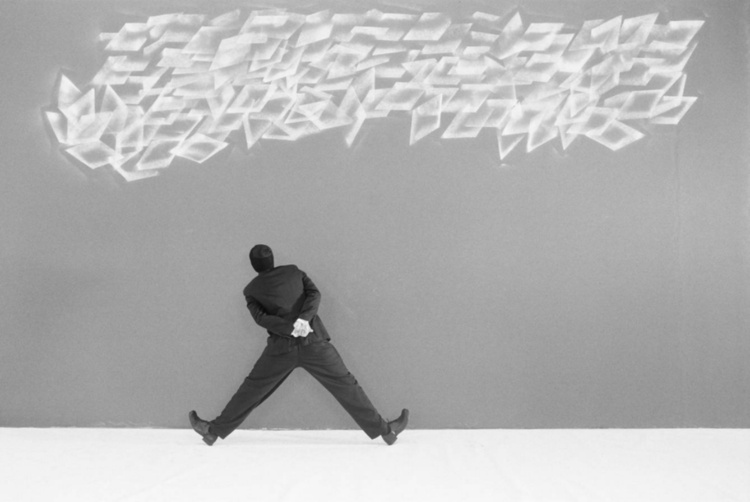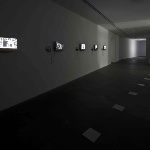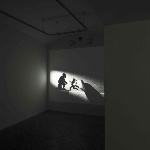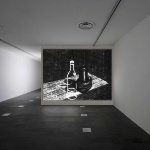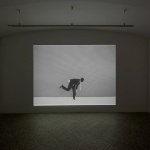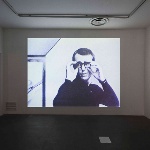
Main site sections
Passo a due
The Avant-gardes of Motion
30.05
-
29.06.2014
Artists: Alexandre Alexeieff & Claire Parker, Max Almy, Berthold Bartosh, Claudio Cintoli, Segundo de Chomón, Émile Cohl, Maya Deren, Nathalie Djurberg & Hans Berg, Ed Emshwiller, George Griffin, Noa Gur, Claus Holtz & Harmut Lerch, William Kentridge, Fernand Léger, Len Lye, Norman McLaren, Diego Perrone, Fratelli Quay, Robin Rhode, Jan Švankmajer, Stan Vanderbeek, Kara Walker.
curated by Lorenzo Giusti and Elena Volpato
From May 30th to June 29th, 2014 the MAN Museum of Nuoro will present the exhibition “Passo a due: Le avanguardie del movimento” (Pas de deux: The Avant-gardes of Motion”), curated by MAN director Lorenzo Giusti and Elena Volpato, curator of the Film and Artist Video Collection at the GAM Museum in Turin. The exhibition will explore one of the most fascinating opportunities that animation offers for the creation of art works: the opportunity to use motion. For many artists and film-makers this feature is so attractive that they employ it, like a stroke of magic, to bring life to the drawn line, shape, marionettes, or photographic images.
Often the creative and demiurgic imagination underlying such drawing or figurative representation can assume, via motion and music, the bewitching traits of a spell, assuming a life that is a flight of fantasy. So it is no happenstance that artists and film-makers who pick up the various techniques of animation often concentrate on images of the body, frequently evoking such figures as Frankenstein, the Golem or robots. Generally speaking the artificial generation of a body is involved, almost as if the creators intended, via a mythical narration, to emphasize their own strength as animators: giving a soul to something inanimate.
This exhibition features art works that provide an historical overview of experimental and artistic animation as seen through the image of the body, of its construction and its montage. When based on drawing, animation seems to originate from line, as in the case of Émile Cohl's pioneering Fantasmagorie (1908) or Ed Emshwiller's Lifeline (1960); in the latter the white continuous mark winds itself around knots of material which, little by little, become an organic swirl that mixes with the photographic image of a ballerina's body. In another example, Head (1975) by George Griffin, the
basic form of a face and the artistic tradition of self-portraiture are divested of any realistic detail before suddenly taking on new life through emotional expression and psychological nuances that are pictorially rendered.
In other artworks the drawing cedes space to sculpture and to the related myth of Pygmalion. An example can be seen in Darkness Light Darkness (1990) by Jan Svankmejer where we see a body that is able to model itself, starting from its own two hands; inside a closed room all the other parts show up and compose themselves into a bodily unit. Svankmejer's hands have a precedent in the surrealism of Alexeieff and Parker's The Nose (1963) in which the single body parts, rebellious and independent, each lay claim to the power of life's magic spell. Recent developments in this
investigation are found in some of Nathalie Djurberg's and Hans Berg's art.
The tale of Frankenstein is explicitly revisited in Len Lye's film Birth of a robot (1936) and again in the Quay Brothers' Street of Crocodiles (1986). In Max Almy's video The Perfect Leader (1983) there is no artificially-built character invented with the function of serving his creator, as in the cases of Frankenstein and the Golem; instead the political leader of the future is programmed by a computer so that his cruel dictatorship will reflect the society that conceived and created him.
Still other works represent the body as a place of construction, not so much of the individual identity as the social one. This can be seen in the famous L'idée (1932) by Berthold Bartosh but also, in a different way, in some of William Kentridge's works; here the pain of the masses leaves traces of black dust on the white pages of history in contrast to lewd bodies washed in the light-blue water of rich magnates. This is also the case in Kara Walker's silhouettes: once again a white background is set up to contrast the black bodies, tortured and violated by ferocious colonialism.
Lastly dance is the most recent expression of beauty in movement, a discipline that allows a full display of the animated body's magic in the most varied places of thought and imagination. This line of investigation is seen in Easter Eggs by Segundo de Chomón (1907), in Fernand Léger's Ballet Mécanique, where machine and body tend to meld into a single moving subject; in the absolute space of the Pas de deux by McLaren, in the astrological night of Maya Deren's The Very Eye of Night (1958) or in the two-dimensional universe of Robin Rhode's drawings where body and line meet on the same plane shared by reality and dream.
The exploration is completed with works by Claudio Cintoli (Più, 1964), in which Pop Art's aesthetics deconstructs the body's identity into clothes and advertised products; Stan Vanderbeek (After Laughter, 1982), where the body's movement through space becomes a modification over time, as in a human phylogenesis; and Claus Holtz & Harmut Lerch (Portrait Kopf 2, 1980) in which the overlapping animation of faces and heads leads, in reverse, to an initial unity of the human features. Finally Diego Perrone's most recent works (Totò nudo, 2005) in which the the famous actor's iconic image is deconstructed and reconstructed in a way that recalls his ability to become, like a marionette, an inanimate body. Noa Gur's White Noise (2012) ideally closes the exhibition with the essential quality of her artistic vocabulary which reconfers the ancient root of drawing on the animation of the body. She captures, via the simple technique of imprinting, an individual and his breath of life.
The exhibiton is documented in an Italian/English catalogue of the same title, published by NERO.

